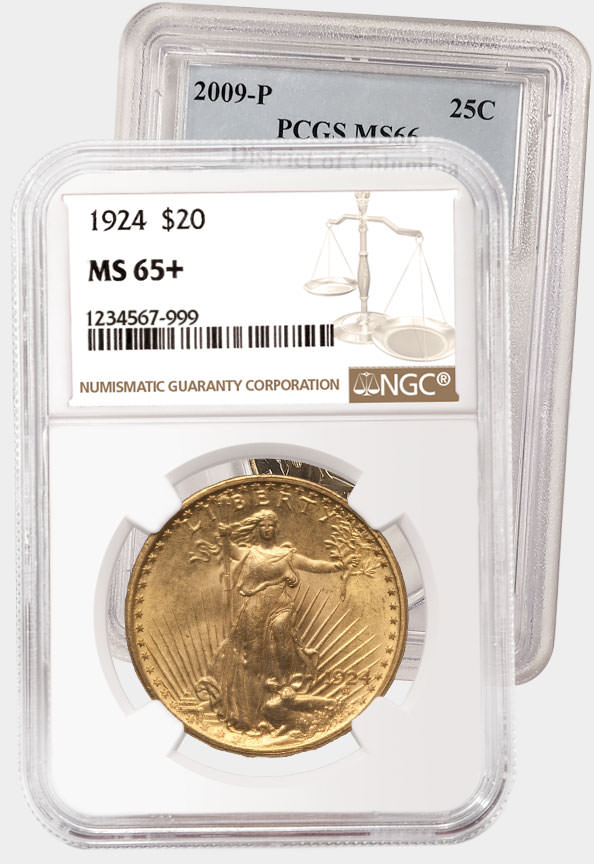NGC Ancients: The Coinage of Ancient Carthage, Part 2
Posted on 7/13/2021
In the previous column, we described coins issued by Carthage prior to the First Punic War (264-241 B.C.). In this one, we’ll focus on the coins of that conflict and the subsequent Libyan Revolt (241-238/7 B.C.). These wars marked the beginning of Carthage’s decline over the next century, which would eventually allow Rome to become the undisputed ruler of the Western Mediterranean.
 |
The gold stater (above), from c.350 to 320 B.C., marked a high point of Carthaginian power. The obverse portrays one of the city's main deities, Tanit, while the reverse shows a horse of beautiful style.
The First Punic War lasted 23 years, making it one of the longest continuous conflicts of the ancient world. The war began in Sicily when Italian mercenaries appealed to Rome and Carthage for help defending themselves from the Syracusans. Both responded with military forces, but Rome's encroachment on Carthaginian soil was taken as an act of war.
As experienced sailors, the Carthaginians enjoyed military superiority at sea. They presumed the sea-battles would take place far from home and that the war would be over quickly. For the first decade the battles took place in and around Sicily, usually with the Carthaginians holed up in their well-fortified coastal cities, which forced the Romans into the role of aggressor. Due to Carthage’s excellent navy, these cities could be resupplied by sea and the war in Sicily ground to a standstill.
 |
Minted in Sicily near the start of the First Punic War, the 38mm 5-shekels (or decadrachm) shown above is the largest silver coin ever produced by the Carthaginians. The obverse shows Tanit and the reverse features a well-detailed Pegasus in flight — quite a departure from the typical horse seen on the city’s coinage.
 |
Another interesting coin struck by the Carthaginians during the war is the electrum trihemishekel shown above. Minted in Carthage, this coin bears the same design as the gold and electrum staters of the previous half century except for the addition of a solar disc between two uraei above the horse.
 |
The above 13mm bronze made at an uncertain Carthaginian mint is also an issue of the First Punic War. While the design may harken back to earlier tetradrachms of Sicily, which bore a horse head on the reverse, the rougher style and fabric mark it as a later product.
Due to the stalemate in Sicily, the Romans prepared to invade Africa in 256 B.C. by sending a force towards Carthage. After fierce fighting the Roman army was pushed back in 255 B.C. and departed from Africa.
From this point onward, the war remained focused in Sicily with the Romans slowly taking over Carthaginian cities. Each side was in dire straits financially and militarily, and Carthage sued for peace. The Romans demanded it turn Sicily over to them, return all their prisoners and begin paying heavy reparations.
 |
The dishekel above, also from the war, is made of billion, a heavily debased mixture of silver and copper. The obverse shows the ever-present Tanit while the reverse hosts a formidable horse.
 |
Another coin of the First Punic War is shown above. Minted on the Carthaginian-controlled island of Sardinia, this 22mm bronze is similar to the other coins of the era except for the Punic letter underneath the horse and the distinctive style and fabric.
After peace was declared, Carthage needed to pay the mercenaries they’d hired to fight the Romans. However, the city was bankrupt, which sparked a rebellion among the unpaid soldiers known as the Libyan Revolt or the Mercenary War. This follow-up war was the last thing Carthage needed in the wake of their crippling defeat by Rome.
 |
The Carthaginian gold half-shekel above, issued from c.241 to 238 B.C., seemingly was made to pay mercenaries returning from Sicily to Africa.
 |
From the same era, the billion shekel above was made by the rebels — and, indeed, was overstruck on a Carthaginian coin. The obverse shows the head of Heracles wearing a lion skin while the reverse shows a powerful lion on the prowl. The overstriking is best revealed beneath the lion by the prominent back-half of a Carthaginian horse.
Carthage fared poorly in the early engagements against the rebels. Initially both sides treated prisoners with respect, but the rebel leaders soon feared this would persuade their followers to join Carthage, so they massacred their Carthaginian prisoners. Carthage retaliated by doing the same to its rebel prisoners, which meant the war became a very bloody conflict in which neither side gave quarter.
 |
During the conflict, the island of Sardinia revolted against Carthage and made the above 22mm bronze with Tanit on the obverse and three grain ears on the reverse.
 |
The billon coin shown above was issued by Carthage during the war against the rebels. It’s an exceptional specimen and a rare survivor in such pristine condition. It presents well with a nicely detailed Tanit and an impressive horse.
Eventually the Carthaginians wiped out the rebels and achieved peace. However, due to the length and magnitude of these two wars, both at home and abroad, the prosperity and strength of Carthage never quite recovered.
In the next column, we’ll focus on Carthaginian coinage from its colonies in Spain, and in the last, we’ll highlight Carthaginian coins of the Second Punic War (218-201 B.C.) through the city’s destruction in 146 B.C.
All photos courtesy of Classical Numismatic Group.
Interested in reading more articles on Ancient coins? Click here
Discuss on the NGC Chat Boards
Stay Informed
Want news like this delivered to your inbox once a month? Subscribe to the free NGC eNewsletter today!
